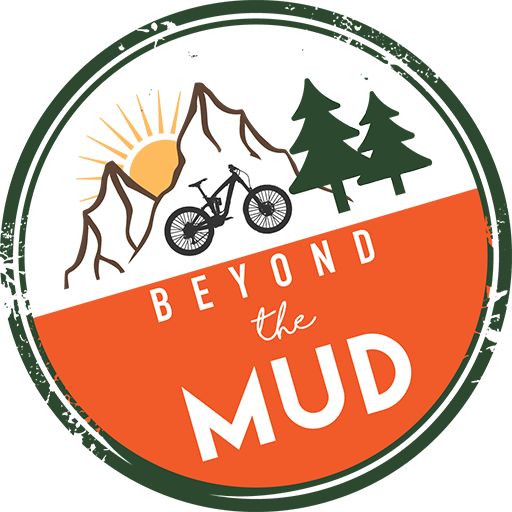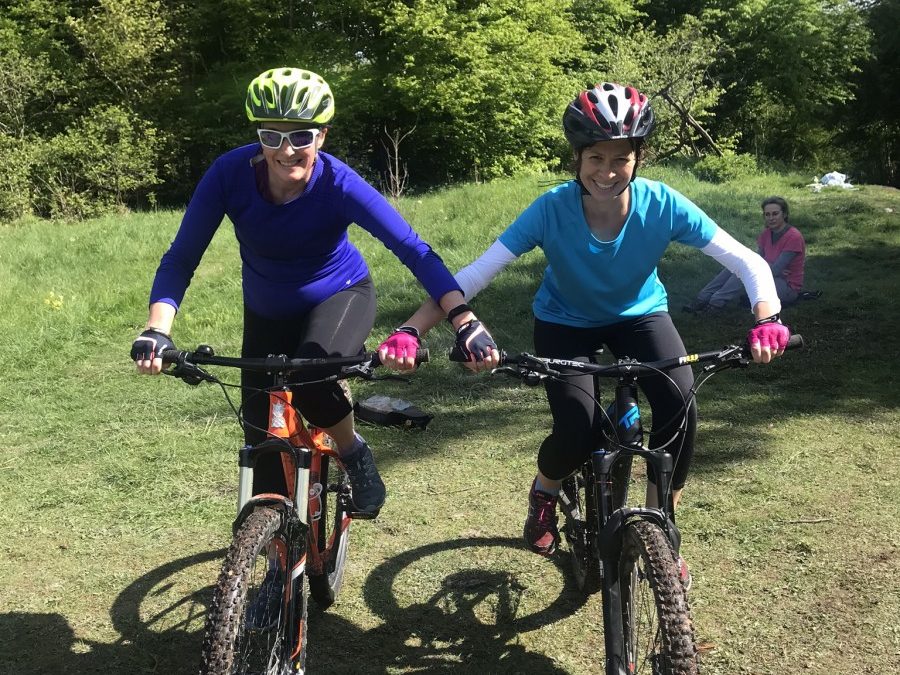Learning to ride a mountain bike is easy. Learning to ride a mountain bike really well is harder and takes practise and patients. However, get the basics right at the start and you’ll enjoy every minute you ever spend on your mountain bike.

Once you have the basic principles of riding a bike like, how to brake and use the gears. There is a whole world of new skills to learn that you can develop to take your riding further and faster.
There are two key elements to mountain biking, physical effort and mental awareness. It’s only when you combine them together that you can effectively start pushing your riding boundaries to new heights.
Physical
Mountain biking involves your entire body. Your core muscles, back, shoulders and arms all play a role alongside your legs and lungs. Mountain biking is a great cardio workout and to a certain extent is non load bearing on your joints which is great! This changes when you start jumping of course!
Mental
This is possibly the harder part. Mountain biking can be as much a mental game as a physical one. The belief in your own skill and ability holds a lot of riders back and it’s worth working on your mental ability to flow through a trail as much as the physical.
This is true for a lot of ‘extreme’ sports knowing what you are capable of and how far you can push your own limits is what keeps us safe and that mental ability to read a situation and keep moving forward and commit is key to riding a mountain bike smoothly.
Top tips for starting out mountain biking.
Relax, breathe and smile!
This is really important, to enable you to flow through the trail. Stiffen up and grip hard on those bars and you make your life a lot harder. Try to breathe consistent steady breaths from your rib cage. Visualise what it will feel like to nail the section of trail in front of you.

Look where you want to go…
You don’t find a lot of straight, smooth trails when mountain biking. Every trail evolves and you need to ‘read’ the sections as they approach. To do this you need your eyes up looking where you want to go. Pick the smoothest line of travel where possible to allow the bike to flow and maintain traction and speed.
Pedalling
Effective pedalling comes from being able to pedal in circles think about scraping your foot backwards, like your wiping something off your shoe, at the bottom of the pedal stroke and flicking your ankle as you return to the top of the revolution.
Cadence is also important don’t plummet to your lowest gear at the sign of an incline instead try and keep your feet moving at the same pace and when you cannot maintain your rpm (revolutions per minute) change gear.
Body position
The front and rear wheels both deliver traction, this keeps you gripping the floor and driving the bike forwards. On flat ground you’ll be sat on the saddle or up in the neutral or ‘ready position’ this is where you pedals are level (unless you are pedalling of course) your knees and elbows are bent and fingers are covering the brakes. In this position you are ‘ready’ for trail features with your feet well away from tree stumps etc… Both wheels are weighted due to your position over the centre of the bike. As the terrain changes from flat to up or downhill, you’ll need to adapt the position to slightly further back. For climbing this works in the opposite direction often you have to push more weight through your arms to maintain traction on the front wheel, remember not to unweight the back wheel or you will slip out.

You’ll need to constantly adapt the position as you feel the grip or lack of it from each tyre and make the necessary body adjustments to suit. Relaxing and looking where you are going help to make this achievable.
Tyre pressures
Lower pressures will provide more grip and when you are leaning your bike into a corner or tackling rooty trails, grip is king. Running too little pressure will expose your rims to possible damage and snake bite punctures. It can also cause tyre sidewalls to fold and deflect. More air pressure makes the tyres feel like they run faster, it will be easier to climb but you will lose a little grip.
Brakes – you have two, use them both!
As a child you probably learnt to only use your back brake, maybe you used your front once and ended up in a heap. Although your back break is needed to control your speed your control comes from the front brake on a mountain bike. This becomes especially important on steep terrain when too much back brake allows the bike to skip sideways you need to be using that front brake for traction and control.


